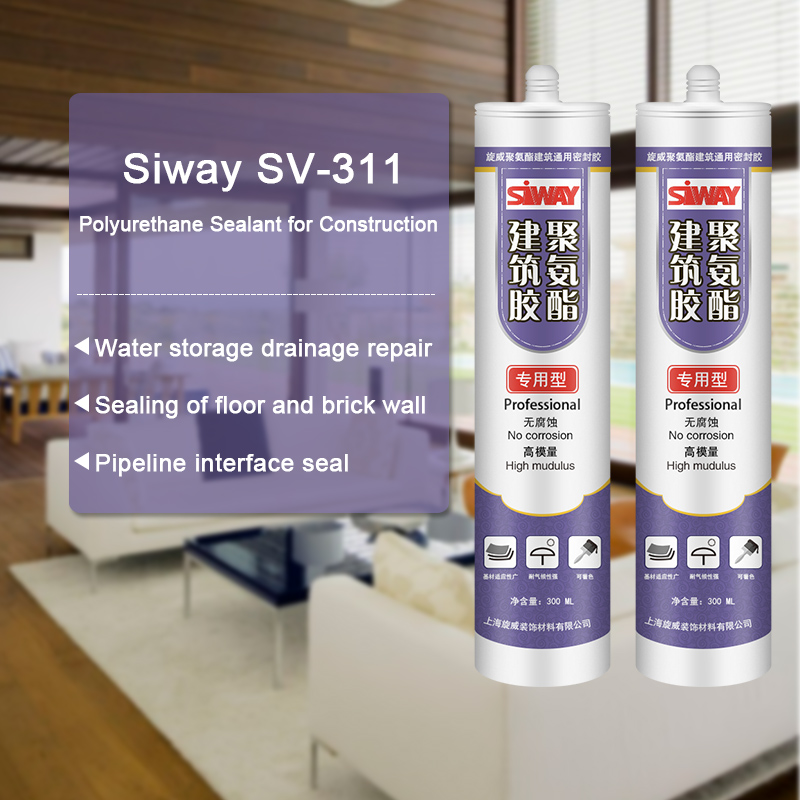Factory Cheap price Siway MG PU FOAM for Melbourne Manufacturers
Short Description:
Description MG PU FOAM is the expansion, moisture curing, has the strong cohesiveness, elastic foam obturator structure; Save work to save time, reduce waste; High bond strength; Bubble can stick in the concrete, wood, metal, plastic, such as base material surface, but not including teflon, silicon resins; Key Features 1. Noise silencing effect 2. Strong bonding strength 3. Water & weatherproof 4. Primerless adhesion to most building materials Basic Application 1.Doors and Windows and...
We are convinced that with joint efforts, the business between us will bring us mutual benefits. We can assure you product quality and competitive price for Factory Cheap price Siway MG PU FOAM for Melbourne Manufacturers, We stick to providing integration solutions for customers and hope to build long-term, stable, sincere and mutual beneficial relationships with customers. We sincerely look forward to your visit.
Description
MG PU FOAM is the expansion, moisture curing, has the strong cohesiveness, elastic foam obturator structure; Save work to save time, reduce waste; High bond strength;
Bubble can stick in the concrete, wood, metal, plastic, such as base material surface, but not including teflon, silicon resins;
Key Features
1. Noise silencing effect
2. Strong bonding strength
3. Water & weatherproof
4. Primerless adhesion to most building materials
Basic Application
1.Doors and Windows and wall body between the gap filling sealing, fixed bond
2.Language lab, studio, etc when decorating, gap to fill
Technical data sheet
|
Project |
Value |
||
|
Density, Kg/m³,Not less |
10 |
||
|
Thermal conductivity,35℃,W/(m·K) no more than |
0.050 |
||
|
Dimensional stability(23±2)℃,48,h no more than |
5 |
||
|
Operating temperature |
-10~+35℃ |
||
|
Optimum operating temperature |
+18~+25℃ |
||
|
Temperature range(After curing) |
-35~+80℃ |
||
|
Tensile bond strength kPa Not less |
Aluminum plate |
Standard condition,7d |
80 |
|
Immersion,7d |
60 |
||
|
PVC plate |
Standard condition,7d |
80 |
|
|
Immersion,7d |
60 |
||
|
Cement Plate |
Standard condition,7d |
60 |
|
|
Shear strength,kpa,Not less |
80 |
||
|
Foam expansion ratio,Not less |
Standard value-10 |
||
Certification
JC 936-2004
Color
White
Package
750ml in Bottle * 12 per box
Shelf life
12 months
Note
If you want the TDS or MSDS or other details, please contact with our sales person.
Titebond® 531 PLUS Concrete Moisture Control System solves the challenges of moisture transfer from concrete subfloors to wood and resilient flooring by reducing the transmission rate of moisture. The system consists of two pre-measured components that are mixed together to form a coating that is applied to the concrete surface. The easy-to-use formula will reduce the moisture vapor transmission rate from most concrete subfloors by 75%-90%.
I recently posted a video showing you how to get a really smooth finish on your MDF edges – using wood filler.
The problem is that this is quite a long-winded job, and as one of my viewers recently voiced in a comment below the video, “imagine doing all this work to 5 closets each 6-8 doors which are 8ft high and 2ft wide. This is just crazy amount of work. There has to be a better way!”
This got me thinking. There are so many opinions on the internet on how best to paint MDF edges, but none of them are backed up with objective demonstration, and so I thought, wouldn’t it be good if I prepared some MDF edges with all the possible options, so that I CAN DECIDE WHICH ONE IS BEST.
So this is exactly what I’ve done in this video. I’ve prepared a mock up with 5 edges, prepared as follows:
- oil based undercoat and top coat
- water based undercoat and top coat
- slightly watered down PVA bond, with a water based undercoat and top coat
- wood filler, followed by water based undercoat and top coat
- MDF edging tape followed by water based undercoat and top coat
MY CONCLUSIONS
The best solution is the MDF edging tape – which produces a really smooth finish, closely followed by the wood filler.
But both of these involve quite a lot of hassle.
What was really interesting was that the oil based solution didn’t produce a noticeably better finish than the water based wood primer undercoat and top coat, and the PVA primer didn’t make any noticeable difference when compared with the edges that had just been primed and top coated.
So in summary, if you’re a professional woodworker and want a truly professional, smooth finish, then filling or treating the edges with edging tape is the way to go.
But for all the rest of us, you get a perfectly acceptable finish by simply treating the edges with a wood primer undercoat, followed by a top coat – like I did here! https://goo.gl/7ohVg2
SUBSCRIBE – you can subscribe to my Channel here:
https://www.youtube.com/c/CharlieDIYite
LET’S CONNECT!
Charlie DIYte
– https://www.facebook.com/charliediyte
– https://plus.google.com/115037167456169721620
– https://charliediyite.co.uk/
– https://www.instagram.com/charliediyte/
– https://twitter.com/CharlieDIYite




